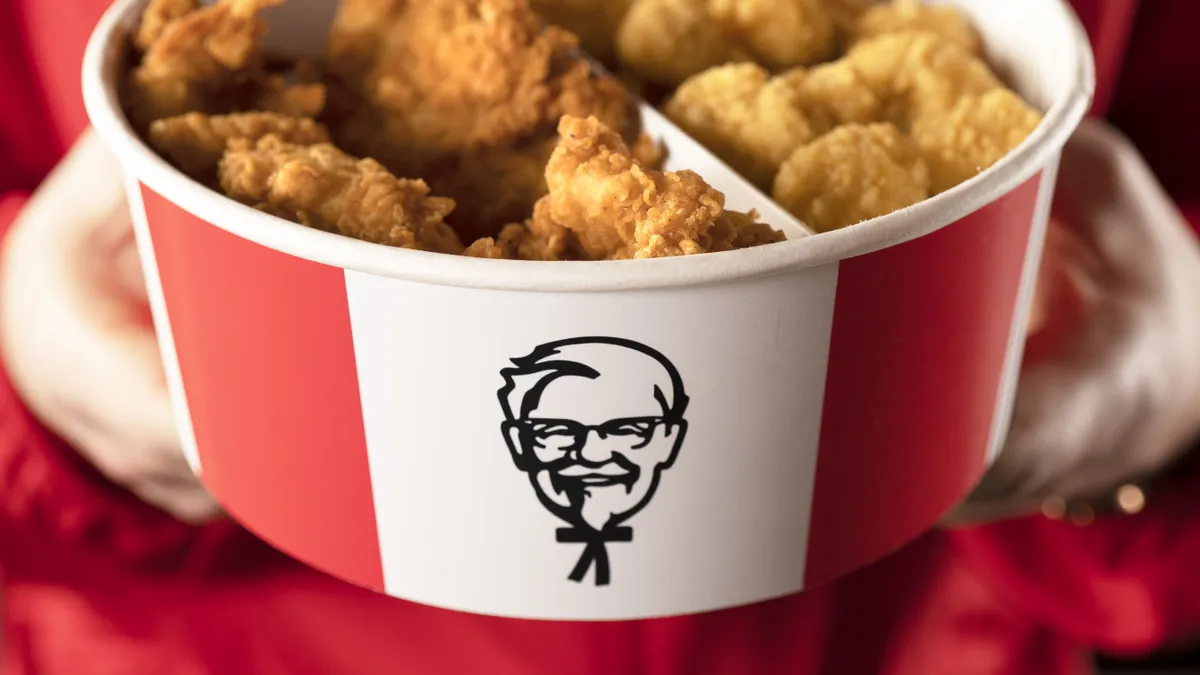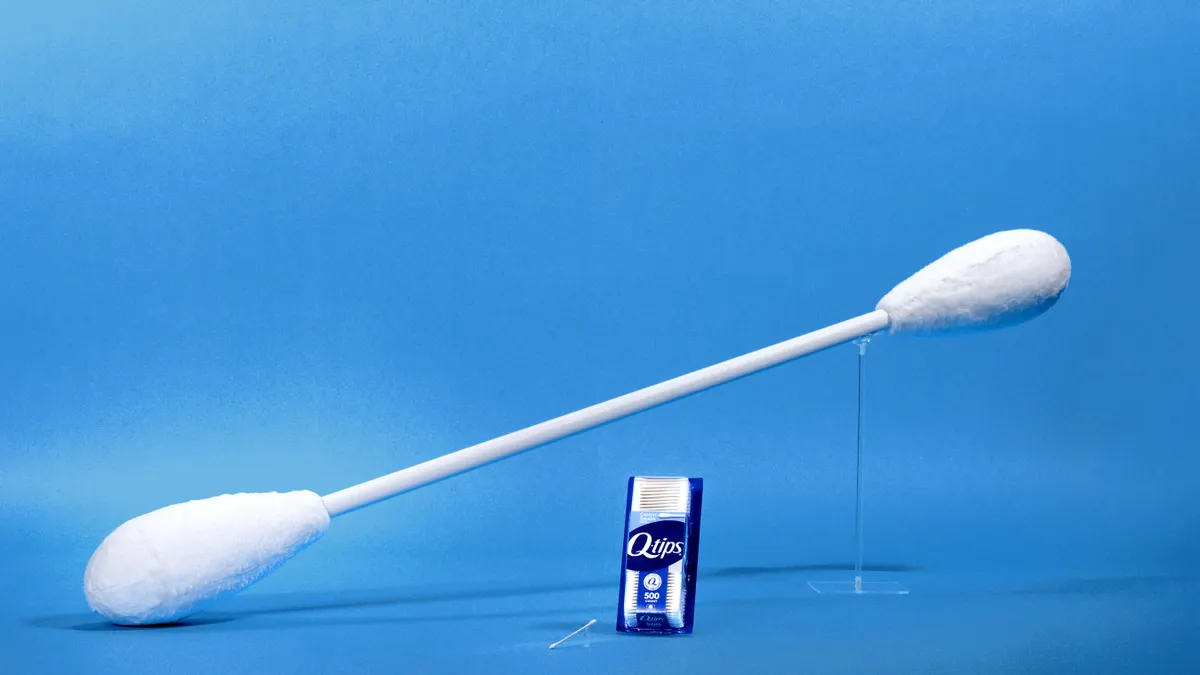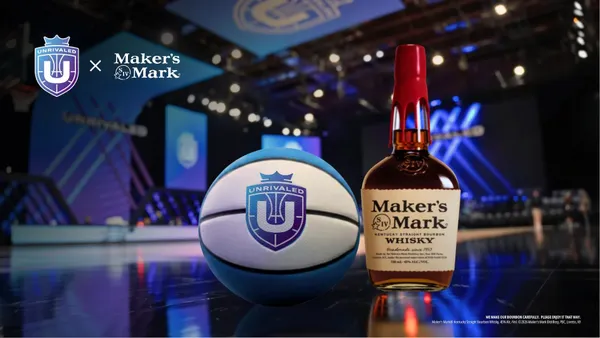Marketers can no longer afford to excel at just one aspect of their business as demands around technology and brand-building converge in the digital era. Learning to smartly leverage existing strengths — such as a recognizable mascot or tagline — while focusing more energy on addressing weaknesses, like a lack of tech capabilities, is key to achieving growth in today's market. At least, that's the theory driving the Relevance, Ease, Distinctiveness (R.E.D.) Marketing strategy that's helped quick-service restaurant giant Yum Brands better ingrain Taco Bell, KFC and Pizza Hut into culture while fortifying sales.
"Marketing is simple, but not easy. And when you've got three brands in 150 countries, trying to get great marketing across the globe, across those brands, really needs a framework," said Greg Creed, former CEO of Yum and an architect of R.E.D., in an interview.
"I think we've taken something that's not easy, made it easy, demonstrated it works and then demonstrated that it does perform," he added later.
R.E.D., whose initial conception stretches back to 2011, is the subject of a new book titled "R.E.D. Marketing: The Three Ingredients of Leading Brands" and authored by Creed and current Yum CMO Ken Muench, who also heads up strategy at the company's in-house Collider Labs consultancy that was acquired in 2015. In recent years, R.E.D. marketing has guided decisions such as KFC resurrecting Colonel Sanders as its mascot — a successful bid to reestablish relevance with consumers — and Pizza Hut bringing contactless curbside pickup to the U.S. in 2020. As evidenced by the latter example, this playbook has served as a lodestar for Yum during the COVID-19 pandemic, allowing the organization to respond quickly to shifting consumer demands and technology needs.
With a reopening taking shape and new mandates to consider in areas like data-driven marketing and digital and mobile ordering, R.E.D. continues to inform Yum's messaging and, increasingly, strategic maneuvers such as a recent spate of tech acquisitions. Heavier investments in tech come as digital sales across the Yum portfolio reached a record $17 billion in 2020, a roughly 45% year-on-year increase.
"COVID was a stress test for R.E.D., and R.E.D. lived up to the stress test," said Creed, who retired from Yum in 2019. "Because cultural norms will change and because social relevance will change and even functional relevance and ease will get better, every brand is going to have to continue to evolve. You cannot just take what you have and continue to be successful."
Switching up the formula
Breaking down the R.E.D. formula, Creed and Muench said one of the biggest blind spots for marketers is around relevance, arguably the most important factor for success. It's a quality that's increasingly hard to come by in a world inundated with digital content and upstart disruptors, but some brands also simply don't have their finger on the right pulse.
Creed pointed to Taco Bell as an example of where marketers can slip on the 'R' aspect of R.E.D. Marketing. In the late '90s, the Mexican fast-food chain introduced an ad campaign featuring a talking Chihuahua jonesing for some Taco Bell. The effort, which ran through the end of the decade, drew industry accolades and has endured as a memorable piece of creative work. One thing it didn't do was translate to stronger performance, according to Creed.
"Taco Bell was winning every award known to man … over that same period, their transactions declined," Creed said. "That was because the brand was incredibly distinctive, but it wasn't relevant at all."
Marketers that fail to survey their surroundings can end up dragging what Muench described as a "cultural anchor," establishing a positioning that may be on-trend or buzzy in a broad sense but doesn't necessarily match the needs particular to its category or market, resulting in a lot of wasted effort. Addressing gaps in relevance can also require taking bigger risks and a willingness to kill a brand's darlings.
"You've got to have a culture where swinging for the fences of doing big, bold and courageous things is actually encouraged and rewarded, not stifled," Creed said.
At Collider Labs in the early 2010s, Muench, the shop's co-founder, came up with the theory that fast food was shifting in consumers' minds from a source of fuel to one centered around experiences. This insight led Muench and Creed to lobby Yum leadership to drop Taco Bell's "Think Outside the Bun" tagline — once a key differentiator from burger rivals like McDonald's and Burger King — in favor of something more lifestyle-oriented. It's a representative example of how R.E.D. tries to factor in not just name recognition for a brand, but also its practical and functional value for consumers.
While the pitch was initially met with pushback from Yum's top brass, Taco Bell in 2012 changed its tagline to "Live Mas" and with it ushered in an era that's seen the chain better tap into a cult-like following through viral activations, including a decked-out branded hotel, and what are now staple menu offerings like the Doritos Locos taco. Beyond grabbing consumer attention more effectively, the company has turned into a sales juggernaut and continued to innovate in mobile ordering and loyalty, launching its first loyalty program in years last July.
"We made everything about social buzz. That didn't exist in QSR prior," Muench said. "[Taco Bell] was, I would argue, the first brand to do that."
Emphasizing ease
Yum's marketing leadership is weathering changes just as the economy starts to reopen at scale. KFC in April lost U.S. marketing chief Andrea Zahumensky, who helped put the Colonel back at the center of its marketing and shepherded a winning streak of growth. Pizza Hut also recently saw CMO George Felix depart for Tinder amid an overhaul to its marketing team. Lindsay Morgan, previously director of brand communications, is now CMO.
A bedrock strategy like R.E.D., in theory, allows Yum to take a modular approach to marketing, directing energy where it's most needed while preserving a core strategic vision. With relevance established at brands like KFC and Taco Bell, Yum is now putting more effort into the "ease" part of the equation as the category at large pivots to mobile and digital channels that exploded during the COVID-19 crisis.
"Delivery and digital and e-commerce — all of that existed before the pandemic, but the pick up on that, the usage of that in most countries, was very small," Muench said. "Suddenly the pandemic comes along and it becomes immediately evident … that that was going to be the biggest marker of success or failure for a QSR post-2020."
Yum has made three tech acquisitions this year to keep pace: the artificial intelligence (AI) unit of performance marketing firm Kvantum (pronounced "quantum"), conversational commerce developer Tictuk and, most recently, Dragontail Systems, which provides AI-based order management and delivery technology. As the QSR hits the gas on reinventing itself as more tech-forward, the R.E.D. mentality will only play a larger role in decision-making, the executives indicated.
"All three [acquisitions] are really because of the rising importance of ease and the changing consumer dynamics around the world," Muench said. "Anything that you can do as a company to accelerate your leadership in that area is going to pay dividends."





















